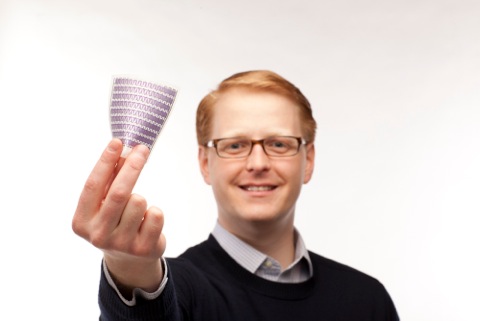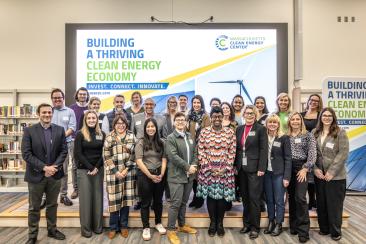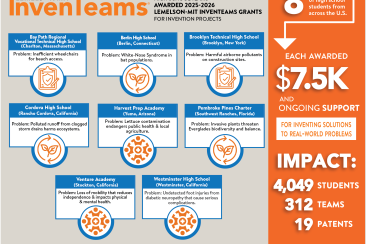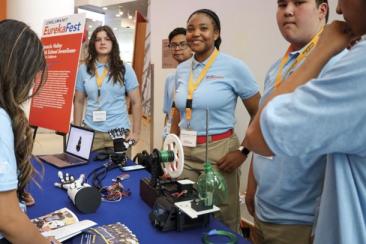MIT Student Inventor Miles C. Barr Receives Lemelson-MIT Student Prize

The Lemelson-MIT Collegiate Student Prize is awarded to inventive students at leading universities.
CAMBRIDGE, Mass. (March 7, 2012) – Miles C. Barr today received the prestigious $30,000 Lemelson-MIT Student Prize for his innovative solar technologies and creativity. Barr received his Ph.D. from the Department of Chemical Engineering at the Massachusetts Institute of Technology (MIT) in 2012 and a Master of Science in Chemical Engineering Practice in 2008. Barr is honored alongside the 2012 $30,000 Lemelson-MIT Collegiate Student Prize winners from the University of Illinois at Urbana-Champaign and Rensselaer Polytechnic Institute.
Miles Barr was an imaginative risk taker from an early age. Refusing to be constrained by the limits of any one interest area, he immersed himself in a variety of subject matters completing majors in chemical engineering, mathematics and music as an undergraduate student at Vanderbilt University. Barr’s passion for diverse influences remains at the core of his approach to invention today.
“Miles Barr is a terrific example of how not just science and math majors, but individuals with a multitude of interests can be successful inventors. We celebrate students like Miles, those with wide-ranging backgrounds who inspire creative thinking in others, with the Lemelson-MIT Student Prize,” said Joshua Schuler, executive director of the Lemelson-MIT Program. “With his passion for innovation, Miles has leveraged his diverse credentials to advance solar technology in a way that could change the world.”
Using Paper to Make Solar Power Universal
Barr’s most recent inventive breakthrough – a pioneering approach to fabricating solar cells on a variety of everyday surfaces – could lead to widespread adoption of solar power. Barr’s approach, which enables solar cells to be printed directly on common materials like paper and textiles, could reduce the cost of solar energy by eliminating the need for specialized installation.
“There is a huge opportunity to harvest energy from the light that hits every surface around us,” Barr said. “If we can take that energy and convert it into electricity without compromising the aesthetics of everyday surfaces that is extremely powerful.”
Developed with the support of the eni-MIT Solar Frontiers Center and professors Karen Gleason and Vladimir Bulović, Barr’s lightweight and bendable solar technology opens untapped venues for commercial applications, including wall paper, window shades, and clothing. The portability of the technology will allow for inexpensive power generation, which Barr not only hopes will increase adoption in the U.S., but help those in the developing world as well.
Moving Forward: Entrepreneurship and Commercialization
During his time at MIT, Barr took notice of “the great ecosystem MIT offered entrepreneurs starting commercial endeavors.” Inspired by seeing the technologies of fellow students go to market and recognizing the value of his own innovations, Barr developed a commercialization plan. He co-founded Ubiquitous Energy, Inc. in 2011, a technology start-up that recently secured initial funding to develop commercial prototypes. Ubiquitous Energy is currently focused on developing new technologies to deploy solar energy harvesting capabilities in the form of products and surfaces we interact with every day.
Guiding Young Creators
Barr’s success has in large part been made possible by the ideals fostered in him by numerous mentors. Committed to paying it forward, Barr strives to positively contribute to society as a mentor himself and has led diverse groups of both engineers and musicians. He has mentored undergraduate and graduate researchers in his lab and has also served as the head teaching assistant for the Chemical Engineering Projects Laboratory at MIT, where he managed 40 undergraduates in semester-long projects.
“Miles is without question one of the most creative and imaginative doctoral students I have advised in my 23 years as a professor at MIT,” said Karen Gleason, Barr’s advisor and professor of Chemical Engineering at MIT. “His imaginative demonstrations readily communicate the import of his research to a general audience, and are a source of inspiration to the next generation of aspiring scientists and engineers.”
Today, the Lemelson-MIT Program also recognized the 2012 Lemelson-MIT Student Prize finalists:
- Jay Saul Silver developed Drawdio, a circuit-craft that attaches to an ordinary wooden pencil and turns drawings into musical instruments that you can play with your finger. Drawdio uses an integrated circuit chip to convert electrical resistance into audible frequency.
- Uri Laserson developed high-throughput methods for categorizing and manipulating the immune system.
Lemelson-MIT Collegiate Student Prizes
Winners of the $30,000 Lemelson-MIT Collegiate Student Prize will also be announced today at their respective universities:
- Lemelson-Illinois Student Prize winner Kevin Karsh has developed a new technique for inserting objects and special effects into photographs and videos. Karsh’s method requires no scene measurements, and can be performed by novice users in only a few minutes. This tool will greatly reduce the time and cost of creating visual effects for movies and product advertisements, and bring exciting new applications for home redecoration and augmented reality.
- Lemelson-Rensselaer Student Prize winner Fazel Yavari has developed a new sensor to detect extremely small quantities of hazardous gases. Made from a 3-D foam of the world’s thinnest material, graphene, this sensor is durable, inexpensive to make, and opens the door to a new generation of gas detectors for use by bomb squads, defense and law enforcement officials, as well as in industrial settings.
ABOUT THE $30,000 LEMELSON-MIT STUDENT PRIZE
The $30,000 Lemelson-MIT Student Prize is awarded annually to an MIT senior or graduate student who has created or improved a product or process, applied a technology in a new way, redesigned a system, or demonstrated remarkable inventiveness in other ways. A distinguished panel of MIT alumni including scientists, technologists, engineers and entrepreneurs chooses the winner.





